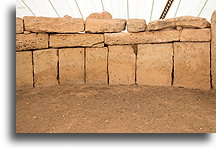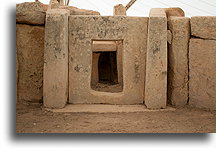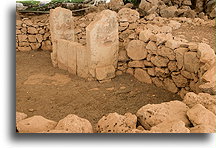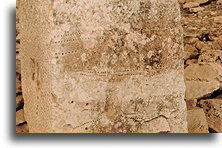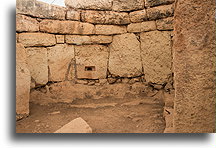
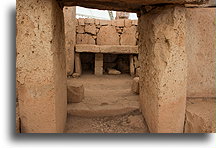
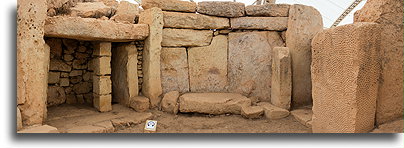
This megalithic complex is found on the southern coast of Malta. The oldest structure in Mnajdra dates back to about 3500 BC, the same period as the neighboring temple Ħaġar Qim. What we can see today is only the best preserved fragment of a larger complex. The south temple in Mnajdra is the most recent from about 2800 BC. It contains two apses and was built to observe the movement of the sun. The structure is perfectly aligned with the rising sun at the spring and autumn Equinoxes, as well as the both Solstices (summer and winter). The doorway, wall corners, and the dedicated blocks inside the chambers stand in such a way that only a narrow beam of the light enters the temple on these special days of the year.
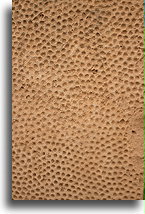
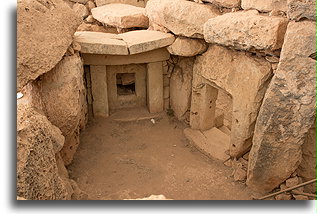
The walls of the temple are often inclined inwards to narrow the surface above them, which was originally covered by corbelled roof made of rock blocks lying on top of each other. In the walls, we can see characteristic stone slabs with a rectangular aperture. They mark the entrance to the sacred chamber. There are many dotted stone slabs in Mnajdra. These are the important blocks with a special location in the temple. The decoration in those days was simple, shallow, drilled holes onto the surface. Two blocks in the east temple, however, have irregular lines of dots. It is speculated that it may represent a primitive calendar or a simple counting system. Some even suggest that the dots coincide with the days between the appearances of some stars, most likely in the brightest cluster in the sky, the Pleiades.
